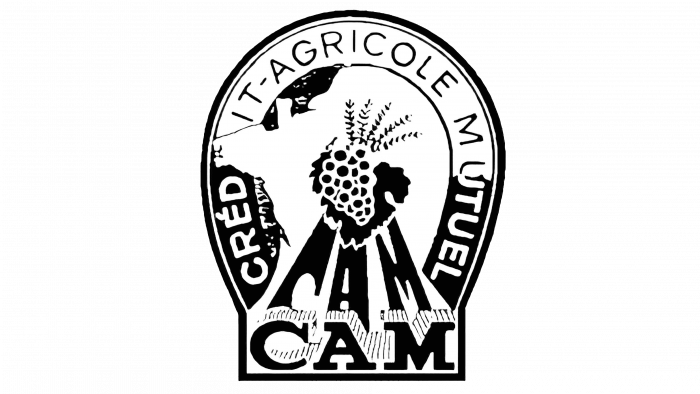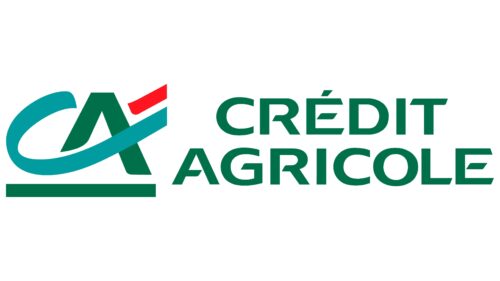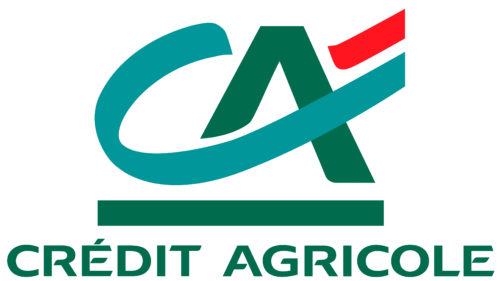A passionate dance and a whirlwind of money depict the Crédit Agricole logo. The logo shows the pooling of cash flows for various financial transactions. The sign is complemented by the presence of a common strategy for all system institutions and special attention to agriculture.
Crédit Agricole: Brand overview
| Founded: | 5 November 1894 |
| Headquarters: | Montrouge, France |
| Website: | credit-agricole.com |
Crédit Agricole is the world’s largest cooperative financial institution. It includes an extensive network of local banks of the same name, 39 regional banks, and the Crédit Agricole SA institute. His expertise includes retail banking, asset management, cooperative banking, investing, personal deposits, and more. For its agrotechnical focus, the company is often called “green bank.” It appeared as an independent structure in 1894. Its head office is located in Montrouge (France).
This banking organization’s work started at the end of the 19th century after the document was approved regulating the freedom of activity of professional associations. Among other things, it allowed the formation of farmers’ unions and local banks for mutual assistance. A year after adopting the Act, the foundation of the current organization appeared – Société de Crédit Agricole. The society was founded in February 1885 at Salins-les-Bains in the Jura region.
Then the Minister of Agriculture of France Jules Méline began to promote the opening of such financial services on the ground so that farmers receive the necessary financial support and actively develop the industry. Lending was mainly related to small family-type farms. So Crédit Agricole spread throughout the country.
The first banks were founded by the rural elite: agronomists, teachers, entrepreneurs, and private property owners. Because the farmers themselves were in the minority, this led to the decline of the banking network due to the inability to provide loans. In 1897, the government demanded that the Banque de France finance Crédit Agricole and issue a one-time 40 million gold francs and charge 2 million francs every year in fees.
Meaning and History
After the cooperative bank felt confident and finally got to its feet, it started thinking about its own identity. Therefore, the history of logos counting does not begin immediately but several years later.
Many emblems of the financial conglomerate remind us of its connection with the agricultural sector because it provided loans to farmers to develop businesses in the early stages of its history. This explains the image of grapes and spikelets on old logos. Also symbolic is the name Crédit Agricole, translated from French as “agricultural credit.” Over time, the bank moved away from crop production because it expanded the range of services. So he began to have universal visual symbols in the form of multi-colored monograms and word marks.
What is Credit Agricole?
Credit Agricole is a financial conglomerate formed from several dozen local and regional banks in France. It bears the unofficial name “La banque verte” (The Green Bank) since, since its inception in 1894, it provided loans to farmers. Now, its range of services is much broader, including investments, insurance, deposits, and asset management. It has branches in many countries worldwide.
1930 – 1948
The debut logo was an unofficial prototype. It emphasized the agricultural focus of the financial institution and consisted of a double-edged circle. In the center were an ear and grapes (on the right) and the inscription “MCA” (on the left). The letters were classic, serif, and the color was monochrome (white and beige).
1948 – 1959
In 1948, the official emblem was approved – semi-oval, in the form of a seal. The developers tried to make sure that it maximally conveyed the priority of the agricultural sector. Grapes were chosen as the main element. A dense bunch was in the center, on a carved grape leaf against the background of a map of France. Under them were the elongated letters “C,” “A,” “M” with unevenly protruding ends. Along the edge, there was a wide strip with the company’s full name – “Crédit Agricole Mutuel.” On a separate fragment at the very bottom, the abbreviation was repeated once more, but in a standard uppercase font.
1959 – 1971
The structure of the logo has not changed – it has just been improved. The designers made the oval distinctly elongated, resembling a horseshoe. This is the link between the agricultural sector and the livestock sector. The authors still left in the logo a bunch of grapes on a broad carved leaf, a map of France, and a shaded sea. Added three ears and removed the schematic inscription from three separate letters – “C,” “A,” and “M.” But they did not touch the lower abbreviation.
1971 – 1987
The beginning of this period marks a watershed in the history of the Crédit Agricole logo. It has become much more laconic and modern. The developers removed all unnecessary elements because the financial cooperative was already widely known and was familiar to the majority. The logo contained the abbreviation “CA.” Both letters were shaped like horseshoes. The lower part “C” served as a crossbar “A.” The focus on the agricultural sector was conveyed by the color – two shades of green.
1987 – 2017
The logo is a stylization of the previous one. The designers have made some adjustments to emphasize the bank’s desire to move forward and be ready for openness. They positioned “C” diagonally and extended the bottom side, “A” added angularity, making it classic. Below the abbreviation is a single green stripe, the same width as the letters. There is a bright red stroke on the top right.
2017 – today
The name of the bank, located on the right and divided into two lines, has become the same turquoise as the diagonals that form the outlines of “A” in a stylized monogram on the left side. At the same time, an additional horizontal strip appeared under the monogram in the form of a narrow rectangle – also turquoise. But the blue-green color is now much brighter than in the previous logo. A long curving line that mimics the letter “C” has taken on an azure hue. And the dark red color turned into light red.
At the same time, the designers have retained the iconic typeface by which Crédit Agricole can be recognized. It is distinguished by open letters: in “R,” “E,” and “A,” the middle strokes are separated from the vertical ones. Moreover, many glyphs have cuts at the same angle, which causes a feeling of smooth movement of the inscription.
Credit Agricole: Interesting Facts
Crédit Agricole is a major player in banking and finance, originally set up to help French farmers.
- Farming Roots: Started in 1894, it aimed to give financial help to farmers who couldn’t get it from regular banks.
- The Green Bank: Known as “The Green Bank” for its focus on agriculture, its logo, a green square, shows its ongoing support for farming.
- Worldwide Operations: What began as a service for French farmers now operates in over 50 countries, serving over 51 million customers with various banking and financial services.
- Decentralized Setup: It’s unique for its network of regional banks, combining local service with the power of a big group.
- Full-Service Financial Group: Crédit Agricole now offers everything from everyday banking to insurance and asset management.
- Committed to Sustainability: The bank is dedicated to social responsibility, focusing on environmental protection, social cohesion, and economic growth.
- Sports Sponsorships: It has a history of supporting sports, including sponsoring a pro cycling team that competed in the Tour de France.
- A Leader in Project Financing: Known for backing renewable energy projects, helping shift towards sustainable energy.
- Banking Innovations: Always looking to improve, Crédit Agricole uses the latest technologies for better customer service and efficiency, including digital and mobile banking.
- Rural Development Support: It backs rural development, offering financial help for infrastructure and agricultural programs.
Crédit Agricole has grown from a small bank focused on French agriculture to a global financial powerhouse, staying true to its roots while evolving to meet modern needs.
Font and Colors
The evolution of the logo was categorical because, as a result, only two laconic letters remained from many small details. But the agricultural theme has always been supported. At first, it was expressed in agricultural details and then in colors. This concept was approved by the management of the financial group at the stage of its inception.
The developers have chosen two types of typefaces for the emblem: chopped – for the side text with an expanded name, with serifs – for the central lower inscription with an abbreviation. In modern versions, graphic characters are used instead of block letters.
The color palette is restrained, with a predominance of green tones – olive, khaki, dark green. Now the designers have added red # ed1c24 and emerald # 009b9d to green # 006f4e.
Crédit Agricole color codes
| Dark Cyan | Hex color: | #009b9d |
|---|---|---|
| RGB: | 0 155 157 | |
| CMYK: | 100 1 0 38 | |
| Pantone: | PMS 7467 C |
| Bottle Green | Hex color: | #006f4e |
|---|---|---|
| RGB: | 0 111 78 | |
| CMYK: | 100 0 30 56 | |
| Pantone: | PMS 3415 C |
| Pigment Red | Hex color: | #ed1c24 |
|---|---|---|
| RGB: | 237 28 36 | |
| CMYK: | 0 88 85 7 | |
| Pantone: | PMS Bright Red C |












